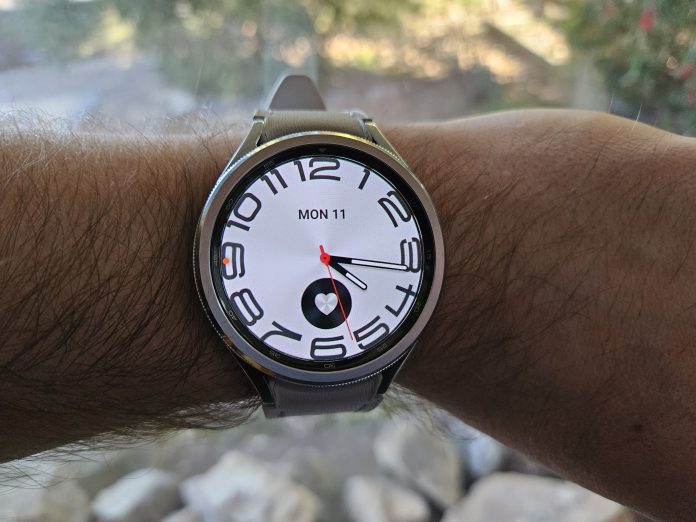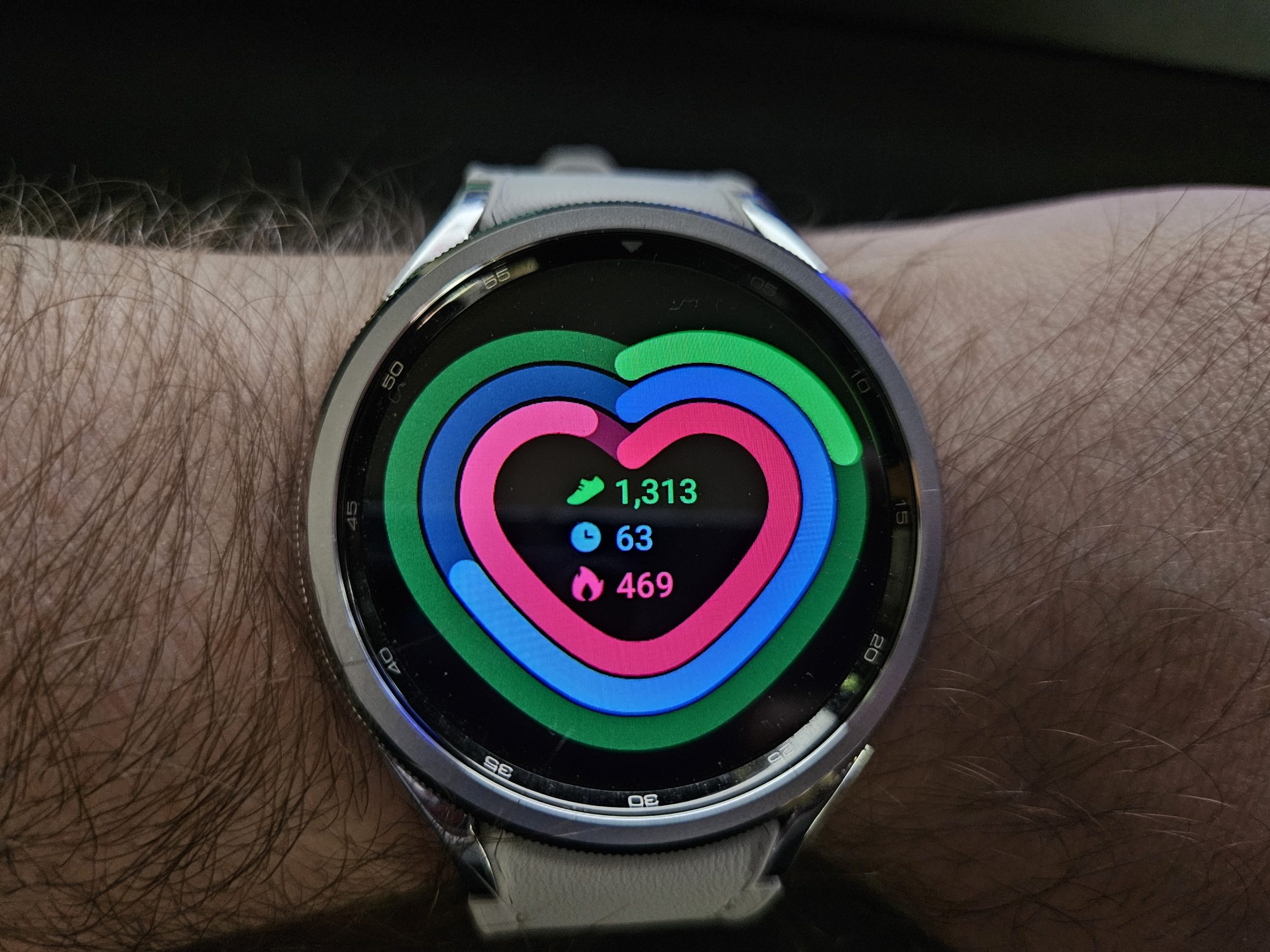There are a lot of good watches out there that are compatible with the Android ecosystem, one of the better known options is the Samsung Galaxy Watch series of devices. They’ve been at the forefront of wearable technology for some time and the first impression of the Watch 6 Classic is that it’s well styled and modern.
In the first impressions post a couple of weeks ago, I covered the specs and a bit about the hardware as well. So today, I want to delve more into the user experience with the Watch 6 Classic.
There are a couple of frustrations with it, so let’s get them out of the way first and it’s essentially the “lock in” approach from Samsung. There are features that won’t work without being on a Samsung device using the Samsung Health app. Now, I get it… that’s a great way (a lot of manufacturers do this) to lock in users because they don’t want to lose their data after years of loyalty to a brand. But I don’t want to be locked into a single provider.
The other main concern I have is the price; $699.00 is a pretty hefty price for a wearable these days, but you get a lot for your money. What I hope to clear up with this article, is to help you decide if that price tag is worthwhile for your wants and needs.
The hardware looks and feels very slick
As a starting point with the hardware, it’s very comfortable which is a must, of course. The other standout feature (other than the size being quite eye-catching) is the rotating bezel. I know that the touch screens are very good these days, and that you’ll generally get a responsive interface from it. But if your hands are wet, or filthy (plenty of tradies out there use smart watches) then you’re likely to lose some of that responsiveness; or not want to touch your watch. The rotating bezel allows you to scroll through the different tiles with ease, using the back of your hand if you want or need to in order to access notifications or information.
Being very much used to — I’ve been using it since last October — the Pixel Watch which is physically a lot smaller; I had concerns about the potential comfort of the Watch 6 Classic. Those fears, as I mentioned in the first impressions, were quickly shown to be unfounded. Despite the 47mm diameter of the device, it’s really comfortable for all day wear, including overnight for sleep tracking.
One thing I have noticed though, is that to get a decent reading on your sleep; the band needs to be reasonably firm and, above your wrist slightly to ensure good reading all night. That being said, after checking on this the — unread to this point — instructions, do cover this detail well. For reference, you can change bands pretty easily and cost effectively to give your watch a new look if you want to.
One thing I’m very much enamoured of with smartwatches is the ability to switch phones without resetting the watch, and, yes, the Watch 6 Classic has this covered. When you change mobile devices regularly, sometimes as frequently as every two to three weeks, moving your smartwatch to another phone is just annoying. On particularly short turnaround reviews, sometimes I’ve not bothered…
Real world use and performance
All of those features are great but a little useless if you need to charge the thing overnight every single night. That’s not the case either, with the battery consistently giving me a full 48 hours of use, sometimes as much as 60 hours depending on the volume of notifications I’ve had and any fitness tracking (with the extra sensors engaged, this does deplete the battery quickly) during that time.
Like most other smartwatches these days, you can choose what notifications come through to the device. If you’re like me and have far too many apps, that give you way too many notifications this is a good thing. I only let notifications for apps that I need to know about come through to my watch; so messaging is a yes, but social media doesn’t get the nod.
Unfortunately, the messaging experience on smartwatches in general is a bit hit-and-miss. WhatsApp has done a good job, Samsung Messages works (if you’re using it) but others just aren’t as fluid of an experience. In fairness to Samsung, this isn’t a reflection on them, but more a case of the apps not being developed for the platform, but who knows what may happen now there are more competitors in the WearOS market. Perhaps the likes of Google pushing things may result in incentives to developers to get their messaging platforms fully integrated into the platform.
Then there’s calls, where call notifications come through quickly and I was surprised at how good the microphone on the watch is for actually taking calls. I had a couple of people note that I sounded a bit different to normal, but not that the audio was “bad” in any way which is both interesting and impressive from Samsung.
Health and Fitness
I mentioned in the first impressions I’ve been using Fitbit for a number of years now. So until a time when data can both quickly and easily be transferred; or preferably shared between these platforms, it’s going to take a lot to get me to move. That being said, I did use the S Health app for a couple of workouts including a boxing session: it’s good but the watch needs to maintain a good read to get an accurate gauge of your caloric burn. So it’s difficult (depending on what you do) to always get a good reading eg. During my boxing session, the watch moved and lost contact with my wrist, so didn’t get a good read on the session.
The automatic detection of activities is well configured and, will kick off if you go on a spontaneous walk without starting tracking yourself. I really like this because while I do tend to track my activities, sometimes it really is a spur of the moment to go for a walk to the playground and chase the kids around for a while.
During the day, the metrics captured for step count and heart rate tracking are pretty bang on compared to other devices I’ve used in the past. I’m a bit unconvinced about the sleep data though, as it was suggesting I got good sleep and I’d woken up pretty tired. Or suggesting I had a fairly average night’s sleep, when I felt really refreshed.
Some of the other sensors like blood pressure and ECG are locked into the Samsung system; you need to have a Samsung phone too for this to work and I was paired with a Pixel for my testing unfortunately.
Final thoughts: The Watch 6 Classic is great as a smartwatch with some activity tracking needs
The Samsung Galaxy Watch 6 Classic is an impressive build with gorgeous hardware and some excellent capabilities. I like everything it has to offer, from the general hardware look and feel to the screen and the granular controls over the notifications and features on your device.
The only real sticking points for potential buyers are likely to be the fitness tracking capabilities and operability with existing accounts and historical data. The price fits with some of the other market leaders, but the question there remains; if you don’t need all of the features there are probably cheaper options that will fit your needs.
For me though, the Watch 6 Classic is a great meld of features, functions and looks. It’ll fit in just fine in a boardroom at corporate meetings, and it will serve you well at the gym.






